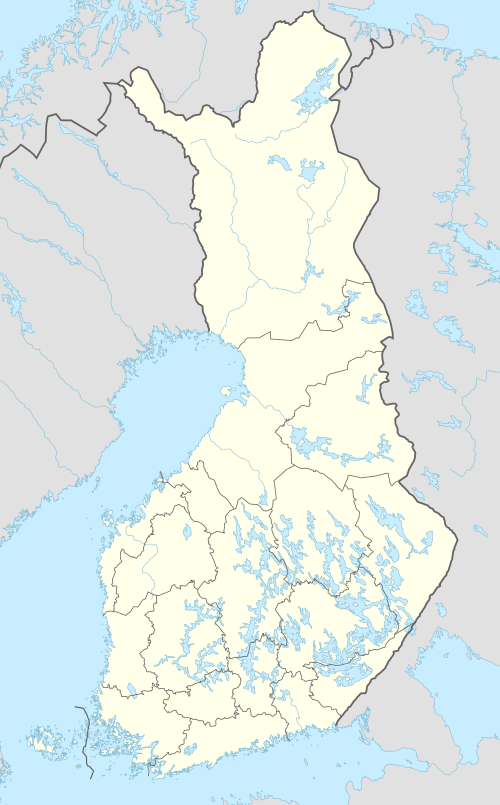Harmaja
Harmaja (Swedish: Gråhara) is an island and a lighthouse outside Helsinki, south of the Suomenlinna sea fortress. The island has been functioning as a landmark since the 16th century. A landmark structure was built on the island in the 18th century and a light house in 1883. The first lighthouse was only 7.3 m high and it soon proved to be too low. In 1900 the height was doubled by creating a rectangular brick building on a granite base. A large foghorn alerted ships in fog and in bad visibility. Harmaja received the world's first directed and undirected radio beacon in 1936. The lighthouse is fully automated today.
 Harmaja Lighthouse | |
 Harmaja Lighthouse Gråhara Finland | |

| |
| Location | Helsinki, Finland |
|---|---|
| Coordinates | 60.105043°N 24.975506°E |
| Year first constructed | 1883 (first) |
| Year first lit | 1900 (tower raised) |
| Construction | stone basement, cast iron tower |
| Tower shape | cylindrical tower with balcony and lantern on a square basement |
| Markings / pattern | red tower with a horizontal white band, green lantern dome, unpainted basement |
| Tower height | 15 metres (49 ft) |
| Focal height | 24 metres (79 ft) |
| Range | 14.9 nautical mile |
| Characteristic | Oc WRG 6s |
| Admiralty number | C5190 |
| NGA number | 14528 |
| ARLHS number | FIN-008[1] |
There is also a pilot station on the island.
During the 1952 Summer Olympics this was the center of the Olympic sailing event.
References
- The Lighthouse Directory Retrieved January 19, 2016.
This article is issued from Wikipedia. The text is licensed under Creative Commons - Attribution - Sharealike. Additional terms may apply for the media files.
